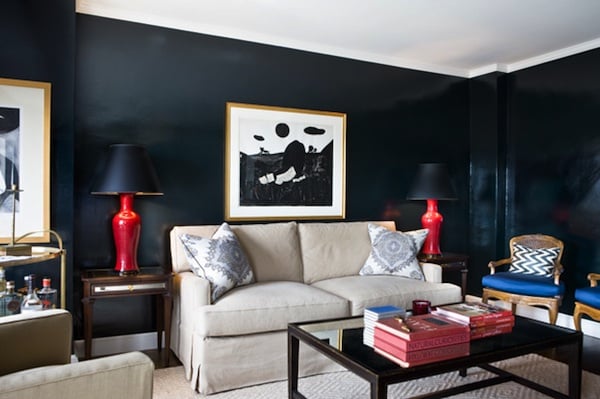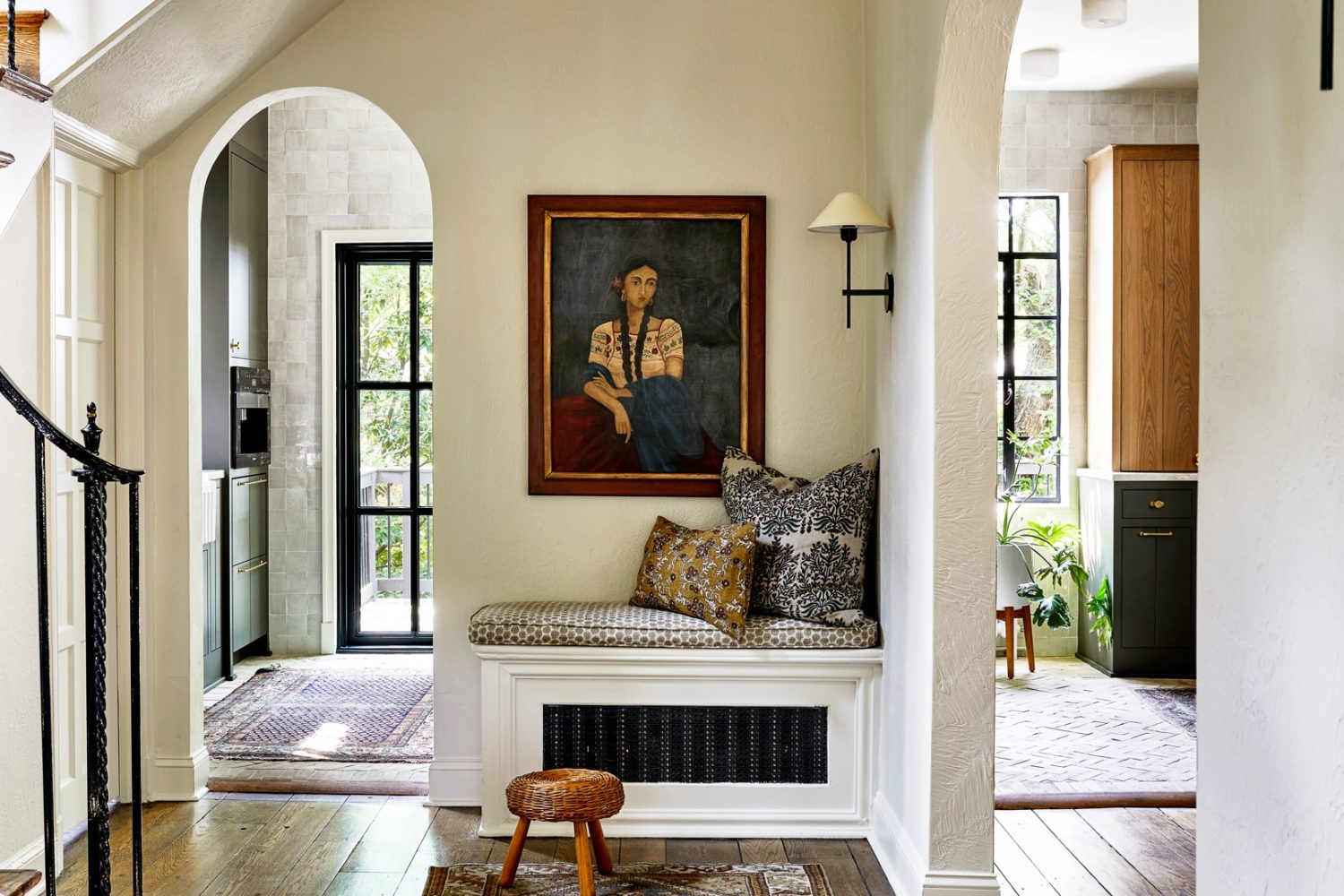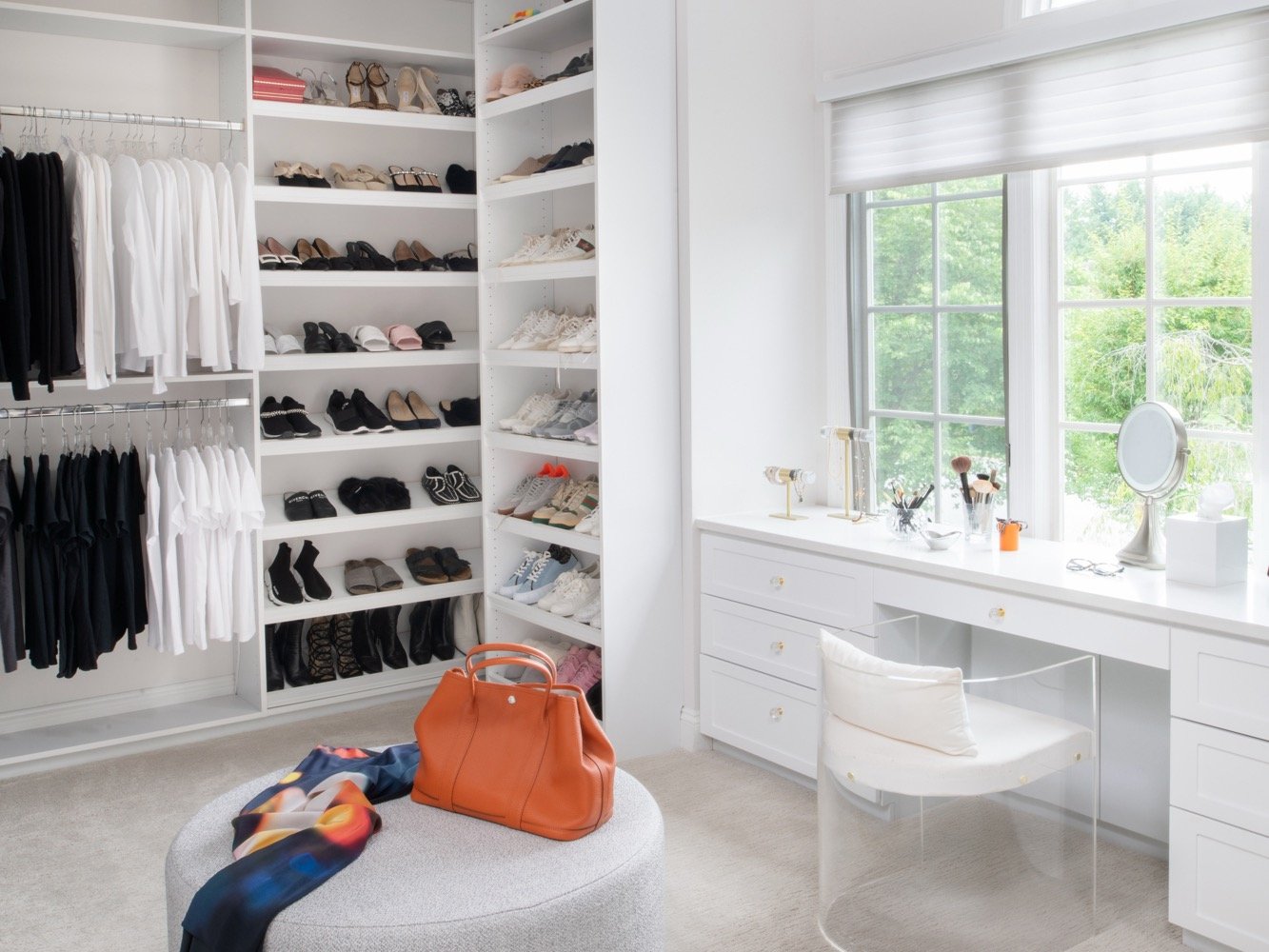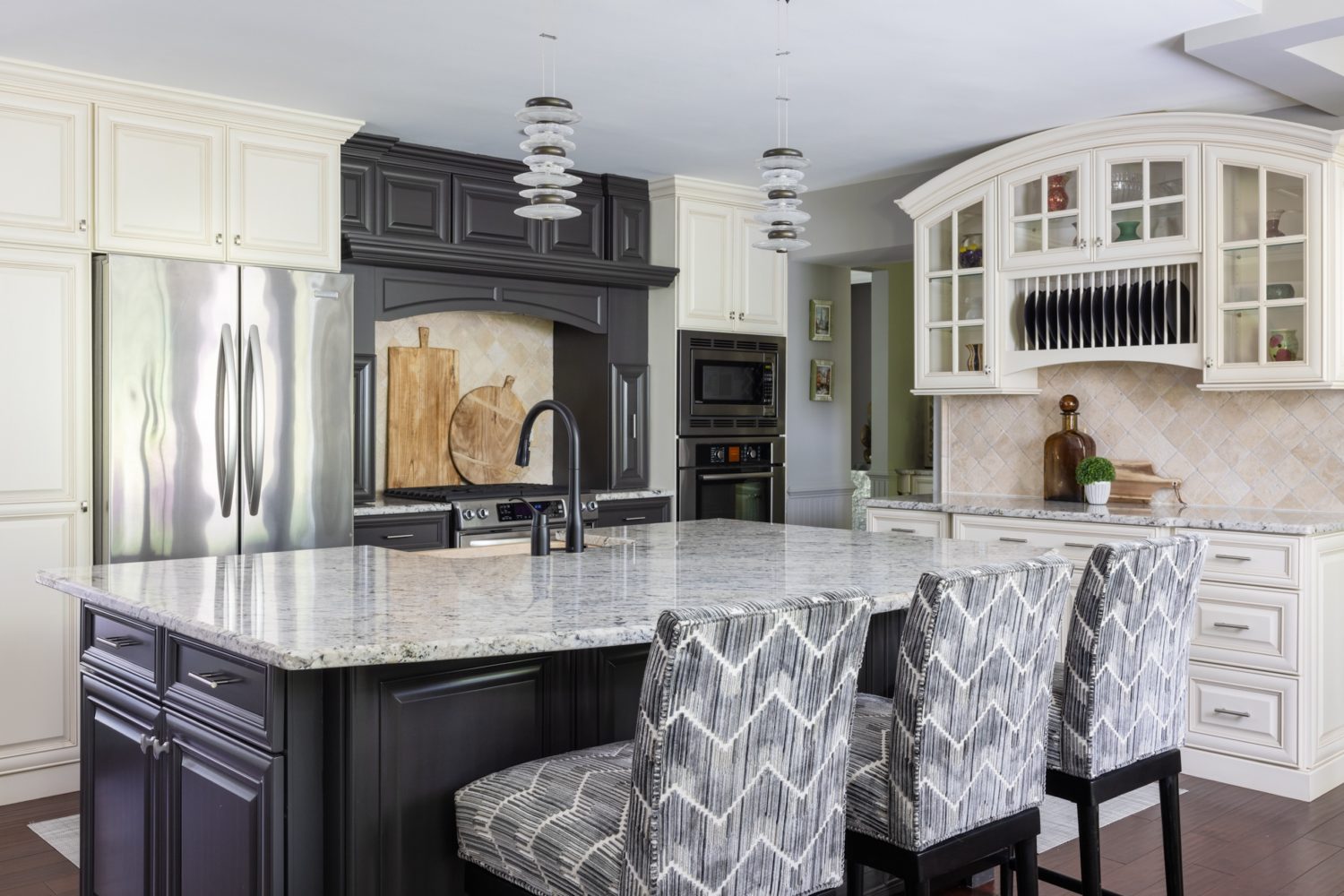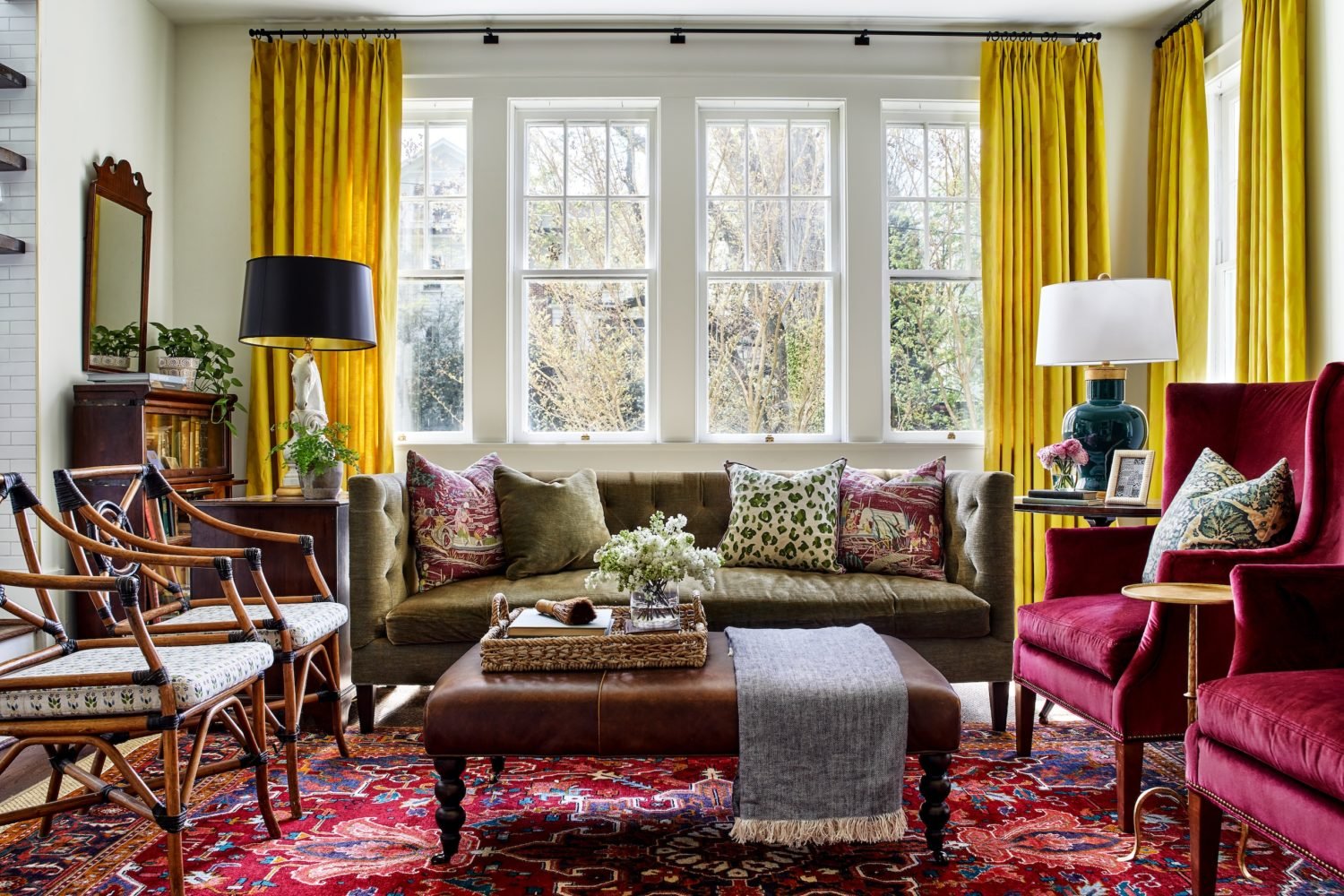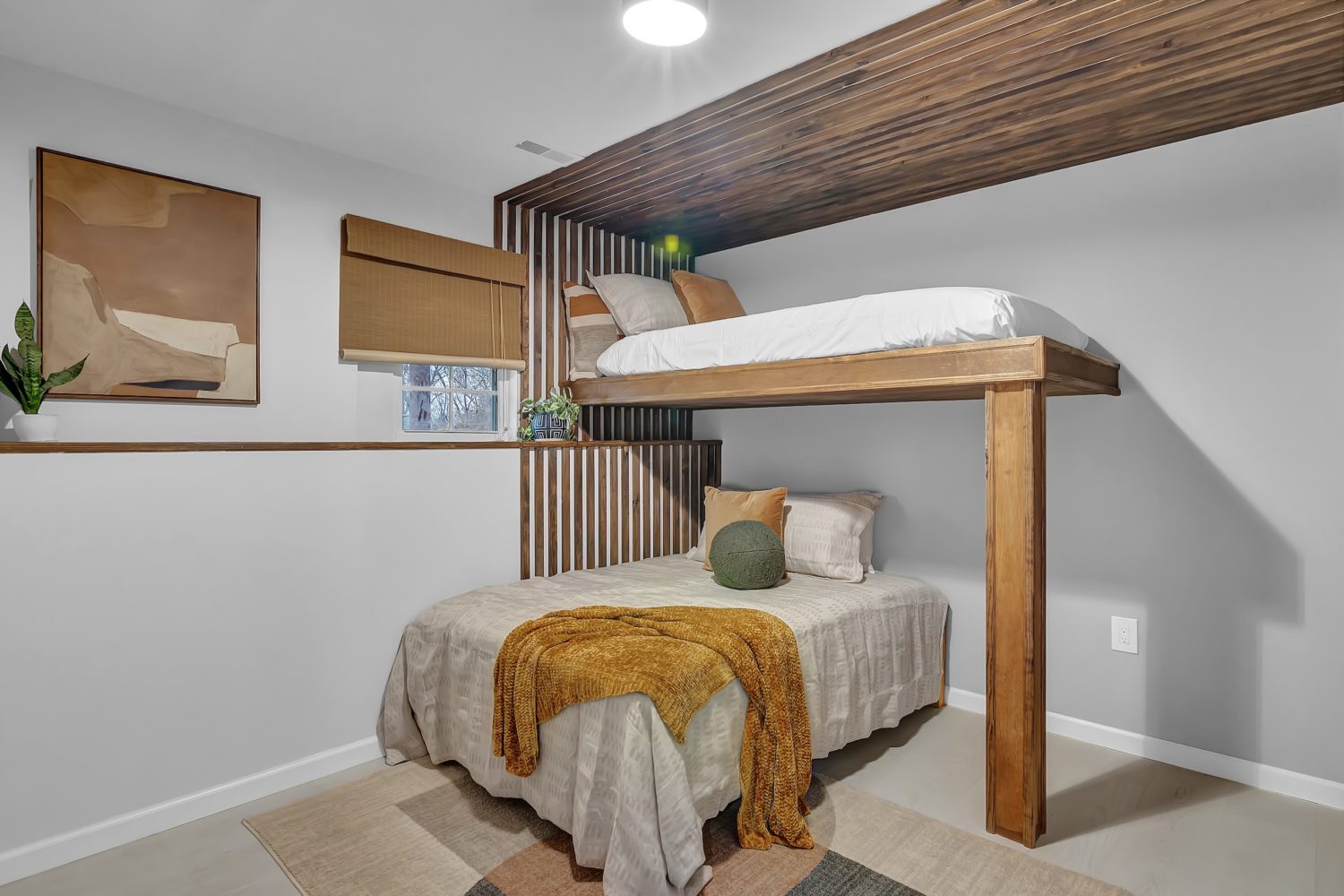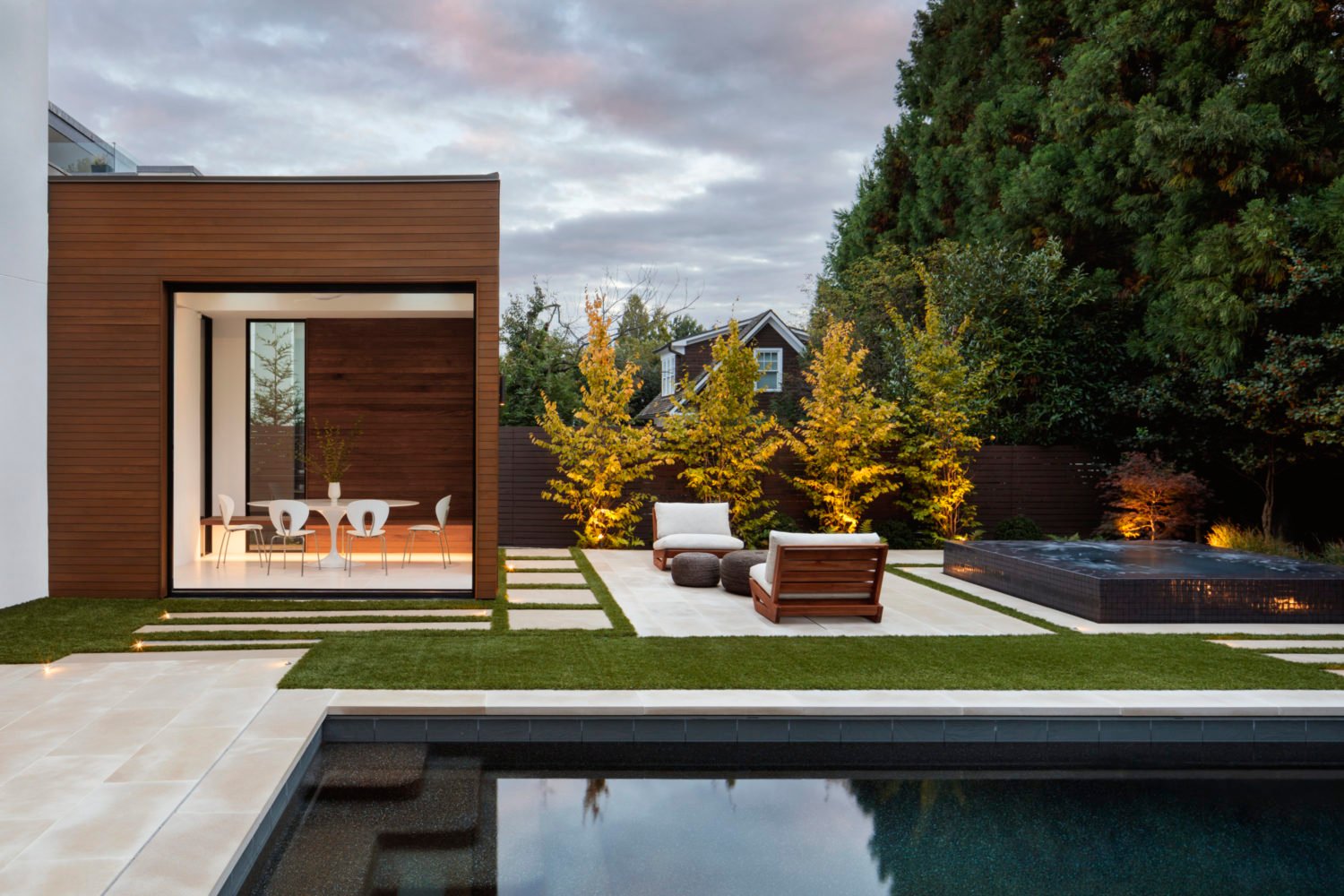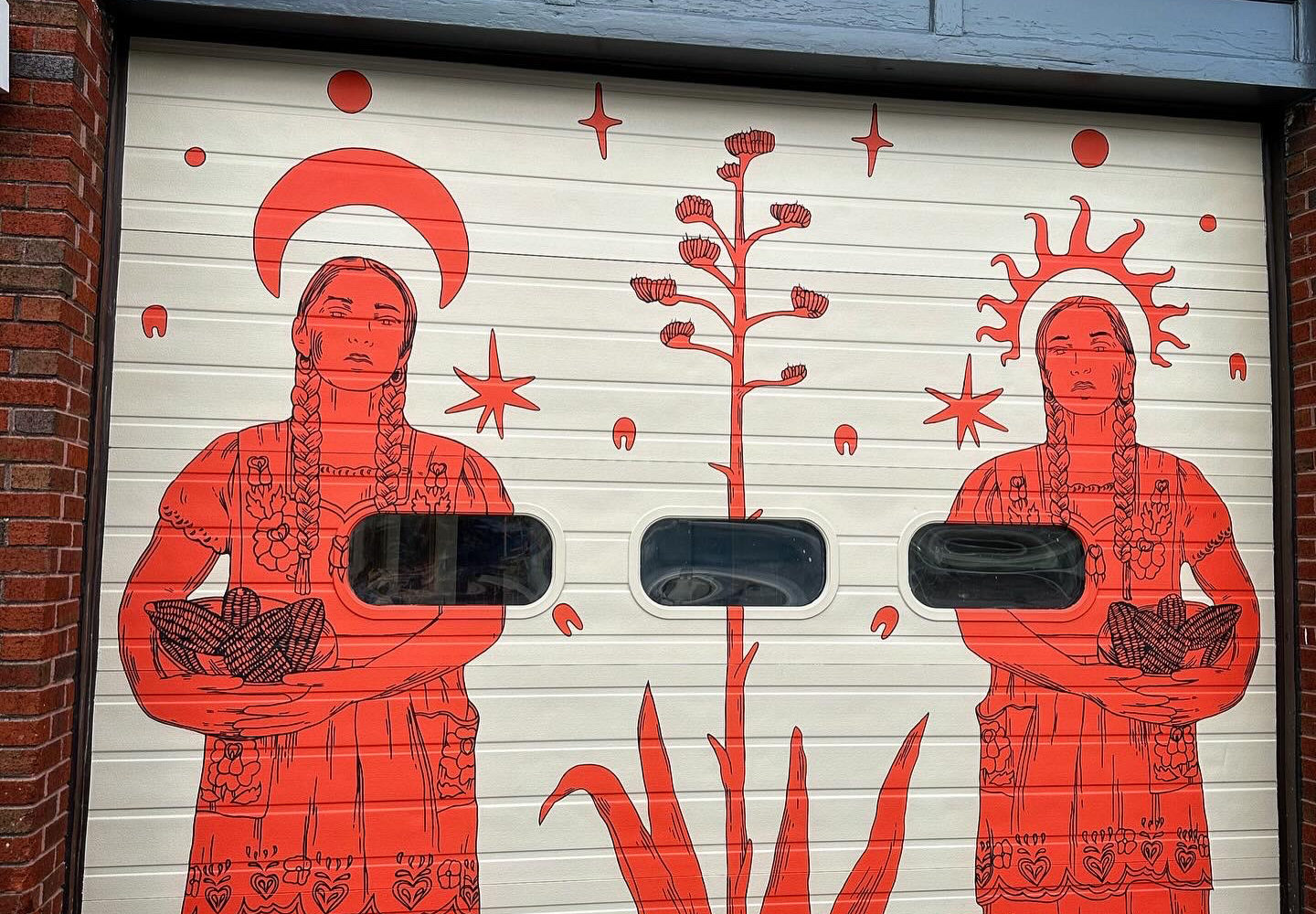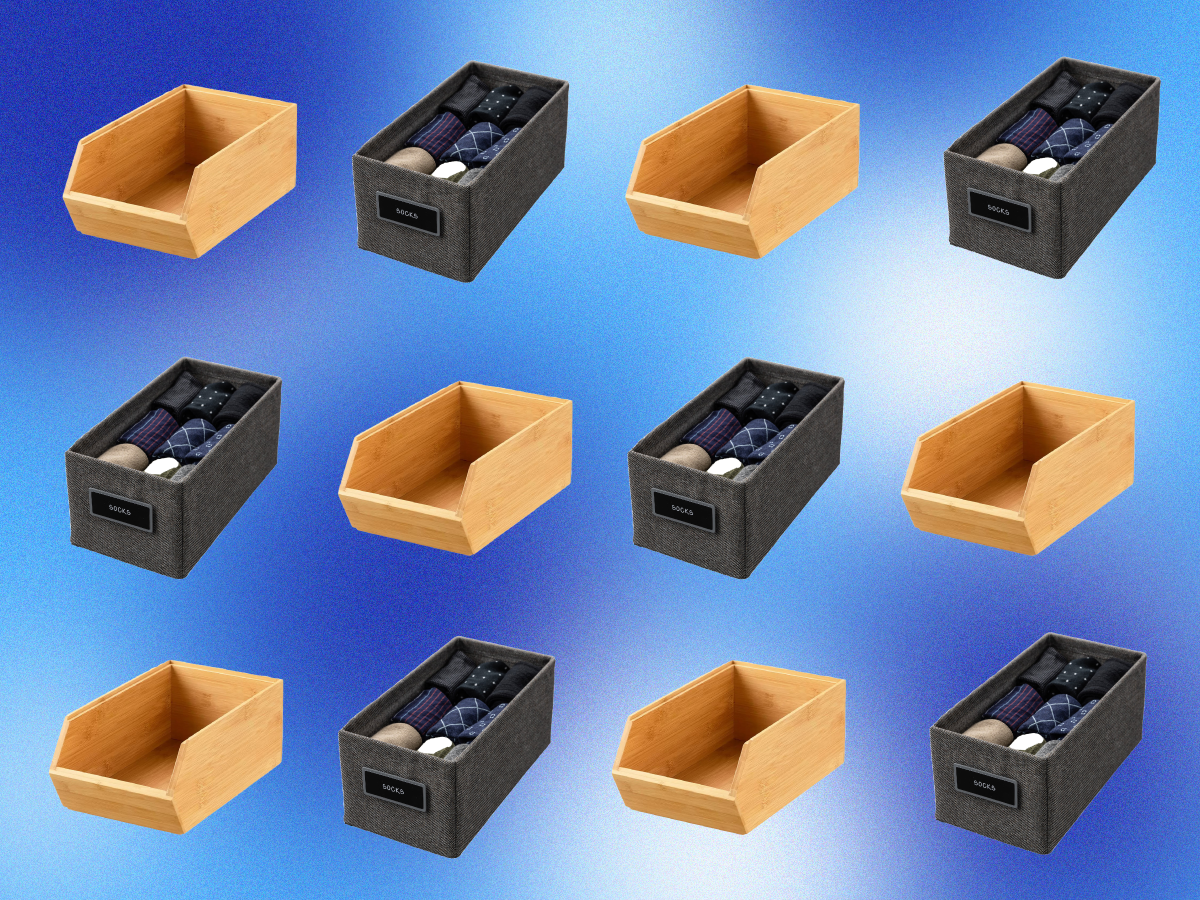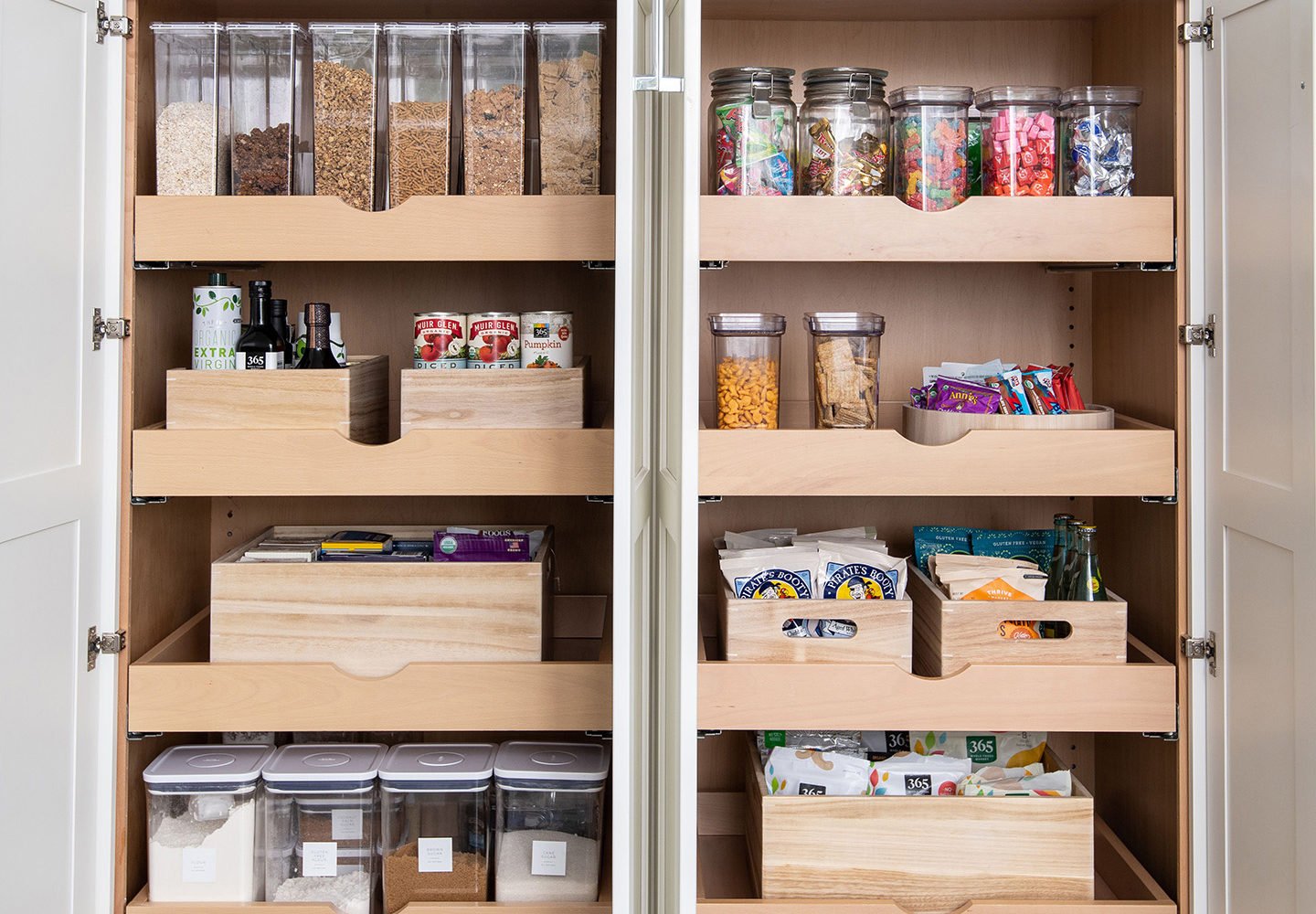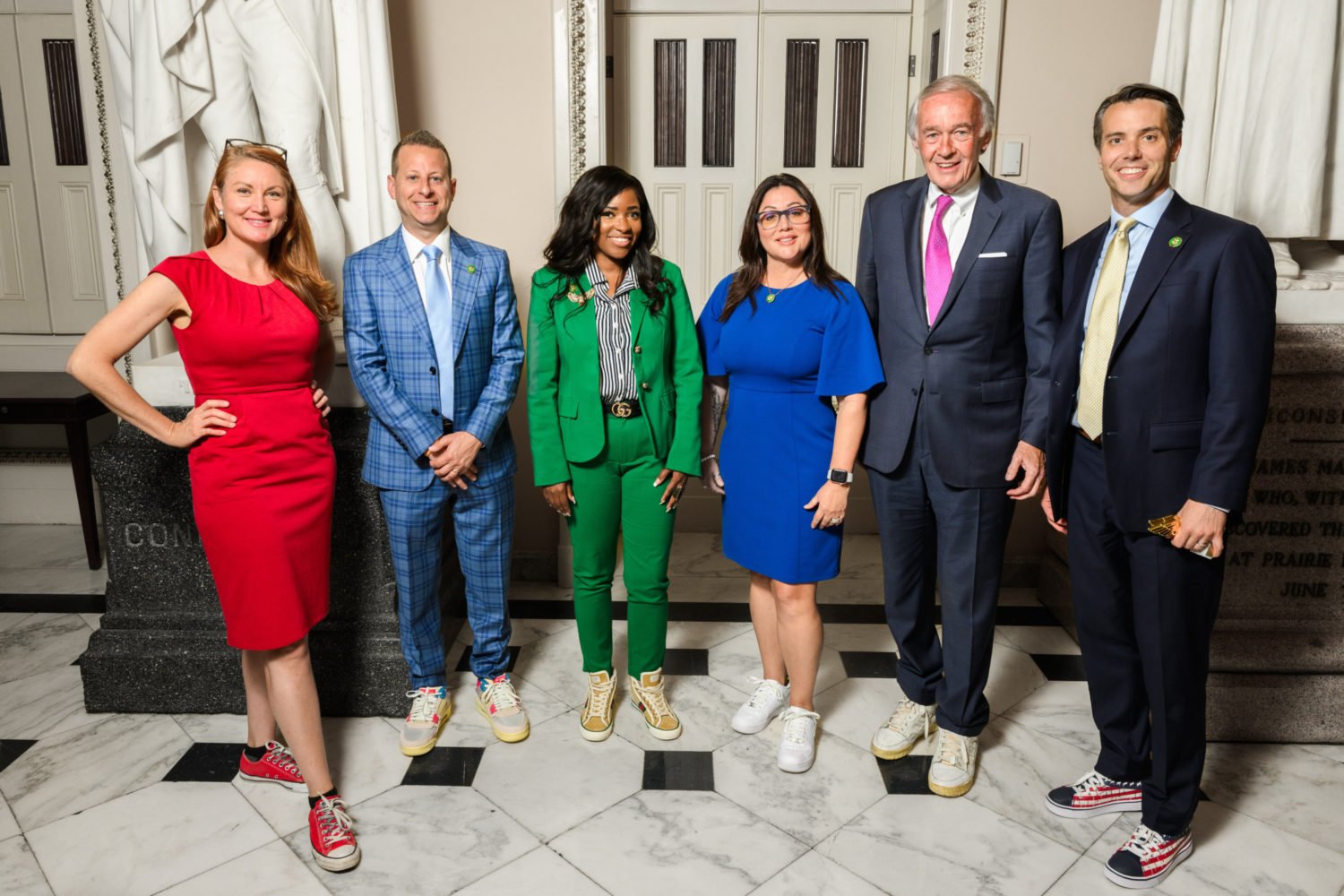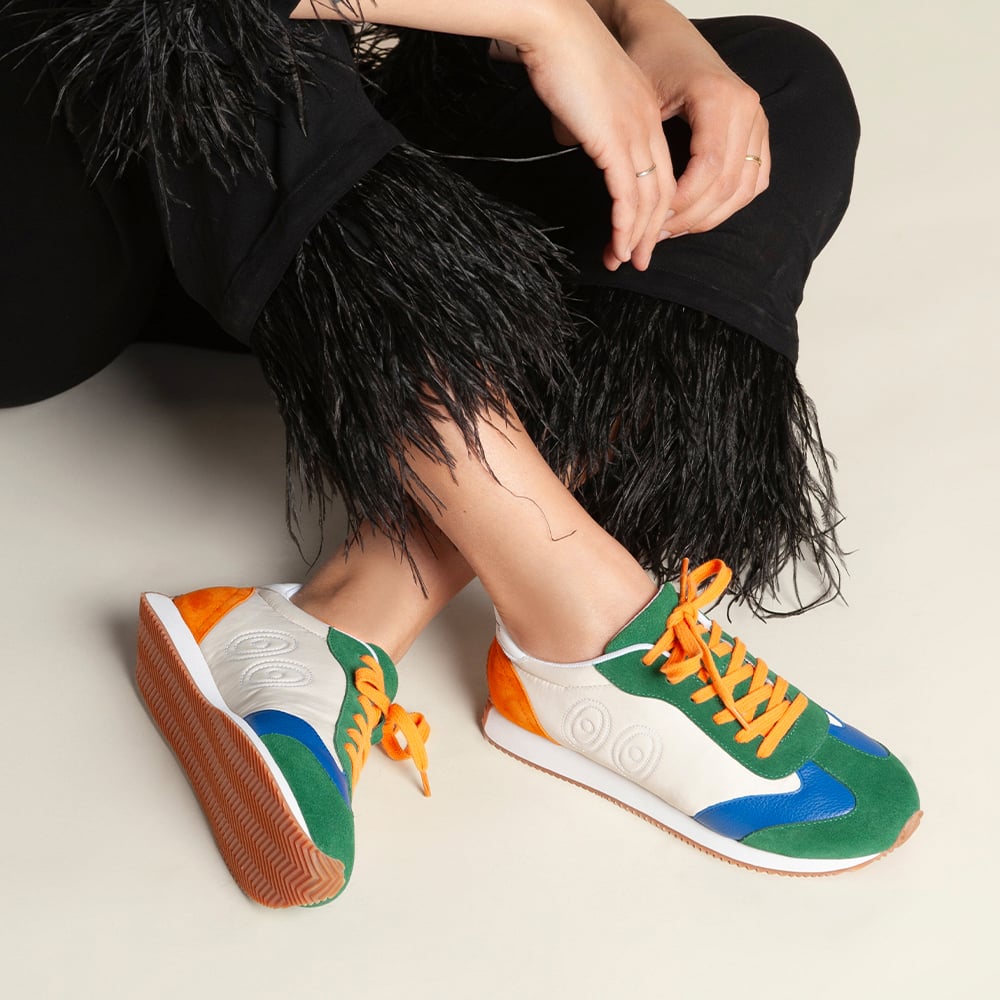High-gloss paint makes art and textiles pop. Photograph by Angie Seckinger, courtesy Sally Steponkus Interiors.
Tangerine Tango and haute herringbone and classic chevron, oh my! In the world of interior design, where what was hot yesterday is out today, trying to keep your home in style can be overwhelming—which is why more and more customers are turning to interior designers to discover the hottest trends. They are the experts after all, and can help determine when to follow trends and when to stick with classic, timeless designs.
We recently talked with five local designers to find out their picks for the most popular design trends of 2011 and how you can incorporate them into your own home for 2012. Here are their decorating dos and don’ts for the new year.
Designer: Sally Steponkus
Favorite design trend of 2011: Lacquered walls or high-gloss paint treatments
Tell us about your favorite project that incorporated this trend:
“I was working with a 28-year-old realtor living in the West End, and he wanted a very masculine, preppy bachelor pad. We decided that using an incredibly high-gloss paint treatment would give us the men’s-club look we were going for. I used a super-dark blue-black paint, and the walls are so high gloss that they look wet all the time.”
What is the benefit of using high-gloss paint?
“Super-dark walls help make art stand out, and great upholstery pops even more.”
Are there any downsides to lacquered walls?
“If your walls are not well finished or sanded, it will be more noticeable. High-gloss paint makes imperfections stand out.”
How can readers incorporate this trend into their homes?
“While a true lacquered wall is a multistep process, you can achieve a similar look using high-gloss paints. I think this is a great thing to do in a dining room. It’s a very dramatic, sexy look, and looks great with candlelight. The look works best with dark colors, such as navy, chocolate, or red. I would not recommend it in a bedroom, unless you have a studio.”
What’s the best way to accent lacquered walls?
“Lighting is crucial. Consider a great chandelier or using recessed light, as the reflective quality of high-gloss paint is one of its best characteristics.”
What type of person would you recommend this look to?
“Someone with a lot of style and who likes a little drama in his or her life. It takes a bold personality.”
Where to find high-gloss paints:
Farrow and Ball has showrooms open to the public; Color Wheel in McLean; Monarch Home Decorating Center
Designer: Robert Shields
Favorite design trend of 2011: Mixing pieces from various time periods
Favorite project incorporating this trend:
“This project is actually still in progress; we are working on a personal library for the client. The foundation of the room is a midcentury carpet with earthy pinks and chocolate brown coloring. Then we are adding an English twist with midcentury lamps and a classically English tufted sofa. We used beautiful French antique tables, leather club chairs, and a more modern rug. And we are covering the walls in chocolate brown lizard.”
How can readers incorporate this trend in their homes?
“They need to start by clearly defining their objective for a room, and maintaining that clear vision throughout the project. When you work with an eclectic mix of pieces, the tendency is to lose track of where you are with things.”
What should you avoid when mixing items from different centuries?
“Don’t get carried away with mixing too many styles. I think the rule of thumb should be no more than three, and two is probably best to keep the focus. You can have fun with the accessories, but limit your focus pieces to three time periods.”
What are your tips for working with mixed pieces?
“Choose quality items that are designed well and will maintain a timeless quality. You want to avoid too-trendy items that will feel dated in your home quickly. Leave the trends for fashion.”
Best places to shop for period items:
“Comer & Co. in Georgetown tends to have a great mix of antiques and midcentury items, and I also like Jean-Pierre Antiques.”
Designer: Annette Hannon
Favorite design trend of 2011: Green design
What does “green design” mean?
“It means many things for different people, but I think for most of my clients it meant supporting local artists, businesses, and manufacturers. They want to keep things local.”
How many projects did you work on that used green design?
“Seventy percent of my clients were interested in going green.”
Favorite green design project:
What started as a three-story addition turned into a slow redesign of much of the home’s interior. We added a formal living room, a guest suite, two additional bedroom suites for the eldest children. a laundry room, a covered stone patio, a pool kitchen and bath, a wine cellar, and an exercise room. Eventually we designed the husband’s office, the kitchen, the family room, the master bedroom, and the kids’ TV room. The client was all about getting behind locals, and we were able to use rugs from Timothy Paul and furniture from David Iatesta. We definitely used the Washington Design Center. The client wanted to keep things local in order to support the local economy.”
Why was green design a trend in 2011?
“I think it boils down to the economy. People had to focus on where they would spend their money and how to get the best value out of it. People are working from home more and more, and they need smart designs for functional spaces.”
How can readers incorporate green design into their homes?
“The easiest way to start being green is by shopping locally. Shop for vintage items or antiques, and support local artists whenever possible. Move away from incandescent lighting and try to use zero-VOC or low-VOC paint.”
What type of person would you recommend this trend to?
“Anyone who is interested in the well-being of our community as a whole and wants to see Washington do well.”
Best places to buy green design items:
Ekster Antiques (particularly their barn sales); RH Ballard; Principle Gallery; Timothy Paul
Designer: Jodi Macklin
Favorite design trend of 2011: Less is more
How did you see this trend used in homes?
“My clients were interested in smaller, well-planned, and well-edited spaces. Clutter was not wanted, and we moved away from huge mansions and big spaces and toward cozier, more inviting spaces.”
How many projects incorporated the less-is-more concept?
“I would say 80 percent of our projects went that direction in 2011.”
What was the motivation behind this trend?
“I think it just feels better to be ensconced in a room that isn’t so cavernous. Smaller spaces can be warmer and more comfortable, and allow you closer contact with others in the space.”
How can readers incorporate this trend into their own homes?
“Start by defining your spaces you are really living in, and create a plan to make a small, inviting space, even if it’s within a larger space. Make rooms more humanized by decreasing the extraneous stuff laying around. Extra stuff can take away from your space.”
What pieces accent this trend well?
“Furniture with cleaner lines and pieces that are lower to the ground help to create a more inviting, welcoming space.”
Designer: Sandra Meyers
Favorite design trend of 2011: One-of-a-kind items
Why was this a popular trend in 2011?
“With the economy being what it is, everyone is feeling a budget. If they are able to splurge on something, they want it to have a personal touch, because that is their release. We’re tired of mass marketing.”
Tell us about your favorite project using this trend:
“I was working on a home in DC, doing a renovation of the master bedroom and an addition of a master bath and closet. My client decided to splurge on the tile, because she is going to have it for ten-plus years. She needed to love it. We also did custom built-ins instead of dressers to optimize storage space in a beautiful and unusual way. We added an antique mirror and antique hardware to the built-ins to customize them. But we saved when it came to furniture. She chose a less expensive bed, and used blinds instead of drapery.”
How can readers use this trend in their own homes?
“They need to find out their options when purchasing. It is too easy to just buy the designs you see on the showroom floor without getting them customized for you. But if you ask questions about your options, you will often find that there are so many little things you can do to an item to give it that extra touch and make it something that feels like you.”
What are your tips for decorating with custom items?
“Remember that not everything has to be customized. Find those few things that—if done right—are really going to make you feel special. That’s when it’s worth it. And do your homework before you go shopping, so you know what you’re looking for and where you can find it.”
Best place to buy one-of-a-kind items:
“Random Harvest always has unique items, and you will never find the same stuff in all four locations. Plus the stores are not overcluttered, so each item shines.”

